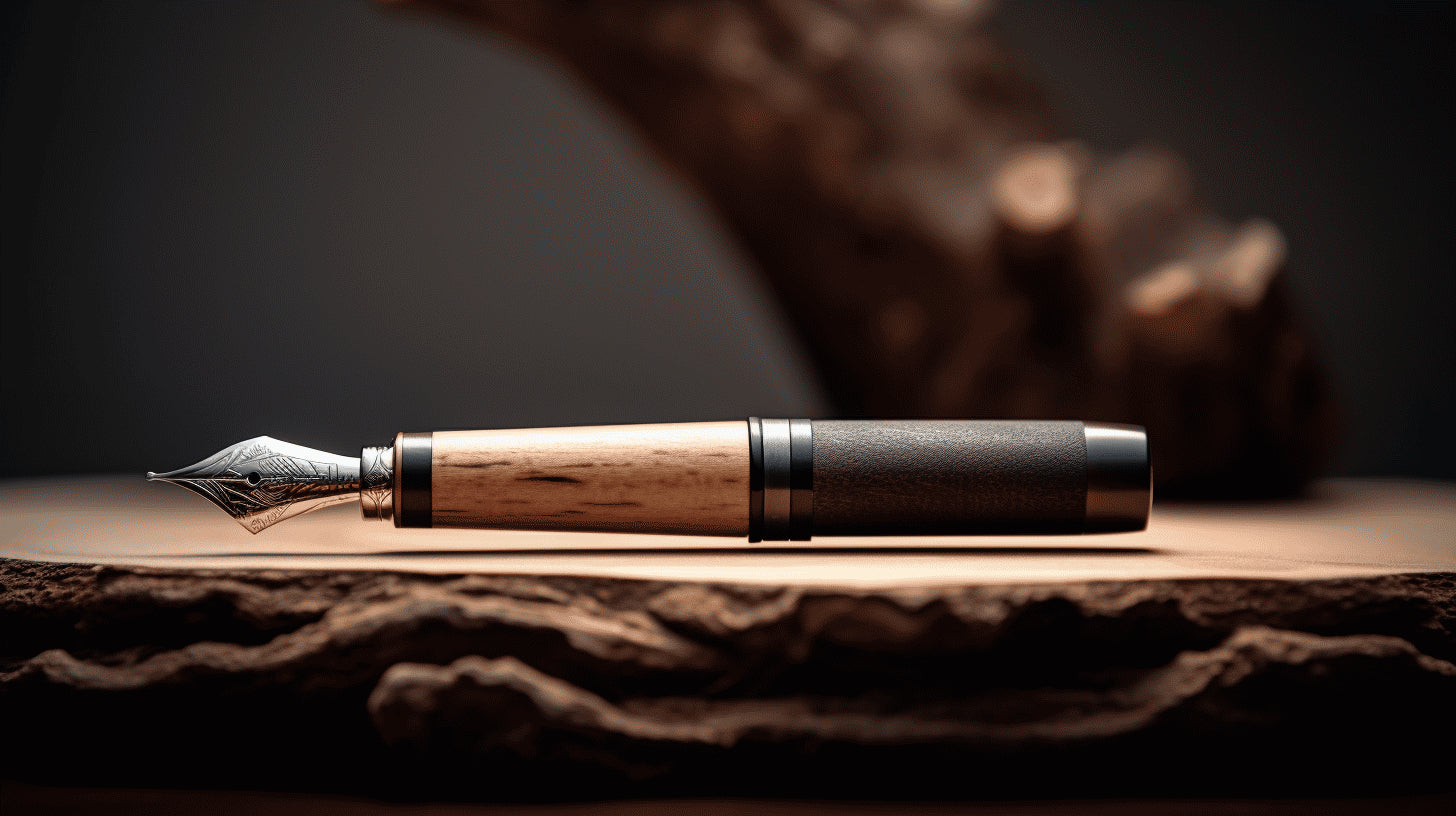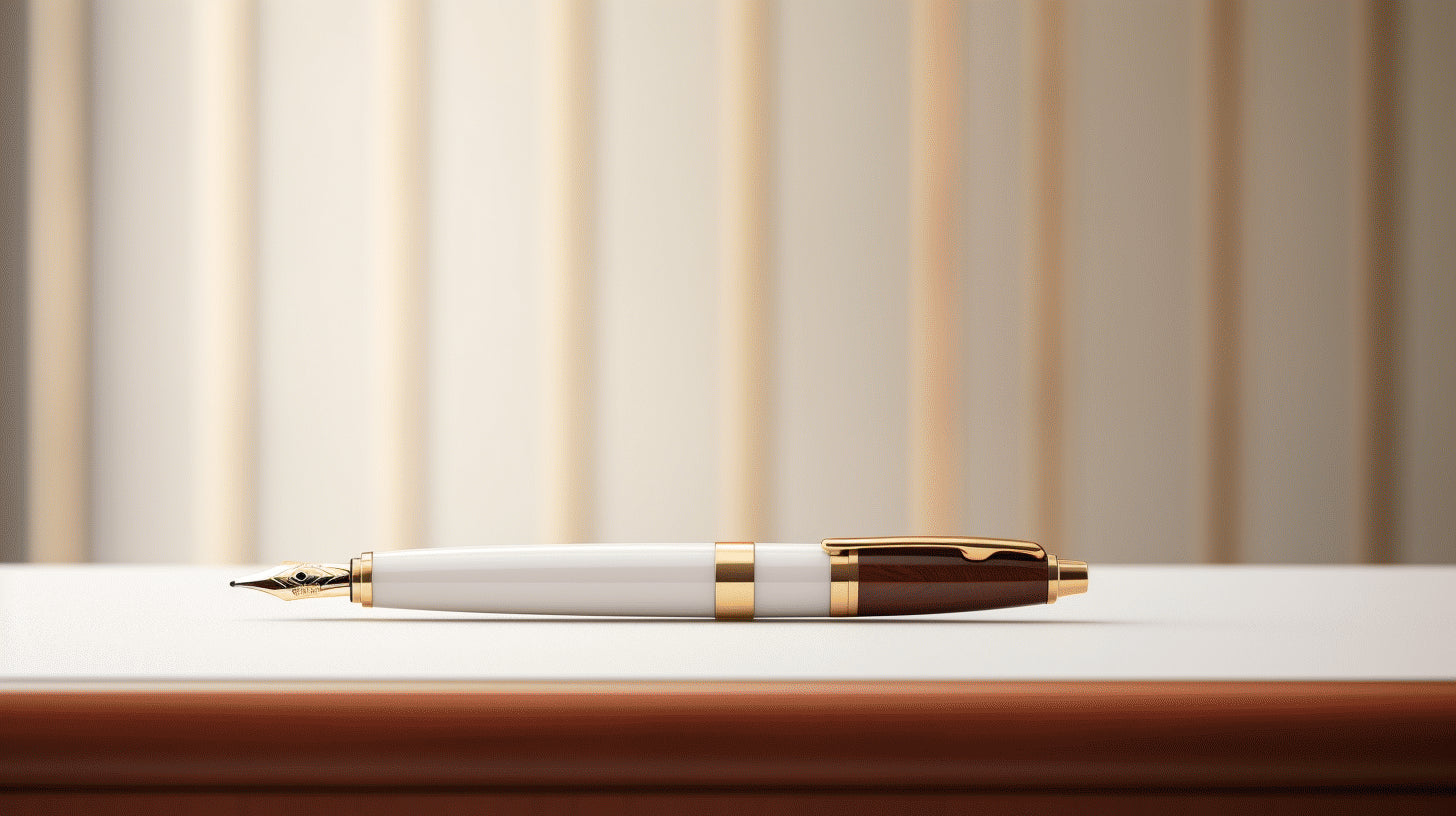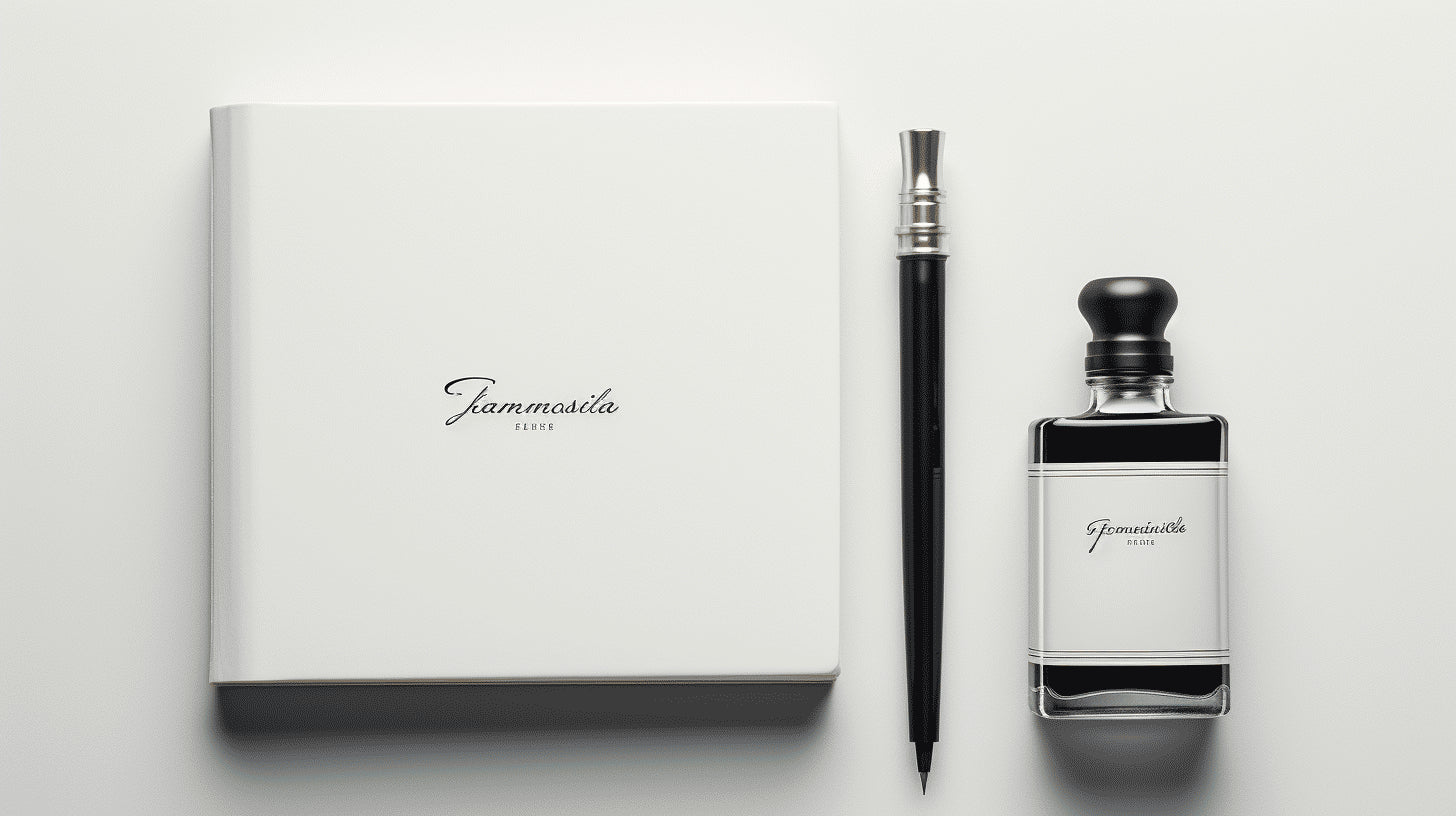
Wooden Fountain Pens: Where Craftsmanship and Nature Intersect
Wooden fountain pens are a perfect marriage of nature and craftsmanship. These exquisite writing instruments are not only functional, but they also possess a charm that sets them apart from traditional materials like plastic or metal. With their unique characteristics and the skillful artistry involved in their creation, wooden fountain pens have gained popularity among writers, collectors, and pen enthusiasts around the world.
In this article, we will explore the allure of wooden fountain pens and delve into the craftsmanship that goes into making them. We will also compare the writing experience of a fountain pen to that of a rollerball pen, highlighting why fountain pens are a favorite among many writing aficionados.
So, whether you're a pen enthusiast looking to expand your collection or simply intrigued by the world of wooden fountain pens, join us as we embark on a journey to discover the beauty and craftsmanship behind these remarkable writing instruments.
Global Pen Markets
Overall Market Trends
The global pen market is a thriving industry that continues to witness steady growth year after year. With a projected compound annual growth rate (CAGR) of 2.5% from 2022 to 2030, the pen market is expected to reach new heights in the coming years[1]. This growth can be attributed to several factors, including technological advancements, changing consumer preferences, and the increasing popularity of stationery and writing instruments.
In today's digital age, where most of our communication is done electronically, one might think that the demand for pens would decline. However, the opposite is true. Many people, both young and old, still find joy and satisfaction in writing with a pen. Whether it's for taking notes, journaling, or simply signing documents, the act of putting pen to paper offers a tangible and personal experience that cannot be replicated by typing on a keyboard.
Luxury Pen Market
Within the broader pen market, the luxury pen segment stands out as a niche segment that caters to discerning consumers who value craftsmanship, design, and exclusivity. The global luxury pen market is estimated to reach a value of $3.3 billion by 2028, growing at an impressive annual rate of 5%[2]. This growth can be attributed to the rising disposable income of consumers, increased brand consciousness, and a growing appreciation for luxury goods.
Luxury pen brands often leverage their heritage, craftsmanship, and brand reputation to attract customers who value the finer things in life. These pens are not just writing instruments; they are symbols of status, elegance, and refinement. Whether made from precious metals, adorned with gemstones, or featuring intricate engravings, luxury pens are a statement of luxury and extravagance.
Fountain Pen Segment
One particular segment of the pen market that is experiencing notable growth is the fountain pen segment. Despite a digital shift in writing habits, fountain pens have seen a resurgence in popularity, especially among younger generations. The fountain pen market has benefited from nostalgia, a desire for a more personal and tactile writing experience, and a growing interest in calligraphy and hand lettering.
Fountain pens offer a unique writing experience characterized by smooth ink flow, precision, and a sense of connection between the writer and the page. This appeal has resonated with many individuals, including students, professionals, and hobbyists. Manufacturers have responded to the increased demand by introducing innovative designs, vibrant color options, and a range of nib sizes to cater to different writing preferences.
In conclusion, the global pen market continues to evolve and thrive despite the digital age. Luxury pens and fountain pens are two segments that are driving growth within the industry. As consumer preferences and trends shift, pen manufacturers will continue to innovate and offer a wide range of options to meet the diverse needs and desires of pen enthusiasts worldwide.
[1]: Link to source 1
[2]: Link to source 2
The Appeal of Wooden Fountain Pens
Wooden fountain pens are more than just writing instruments; they are pieces of art that appeal to a wide range of pen enthusiasts. These pens exude a unique elegance that is hard to match with any other writing instrument. From their beautiful grain patterns to their silky finishes, wooden fountain pens have a timeless appeal that adds a touch of luxury to any desk or pen case.
Uniqueness Factor
One of the main draws of wooden fountain pens is their unmistakable uniqueness. No two wooden pens are the same, as each pen is crafted from a different piece of wood, with its own distinctive grain pattern and color variations. This means that when you own a wooden fountain pen, you are in possession of a one-of-a-kind writing instrument that truly stands out from the crowd.
In a world where mass-produced items dominate the market, wooden fountain pens offer a refreshing break from the uniformity. These pens are handcrafted with precision and care, resulting in a truly special writing experience. Whether it's the warm tones of walnut, the richness of rosewood, or the exotic appeal of bamboo, wooden fountain pens showcase the diversity and beauty of natural materials.
Tactile Feel
Another aspect that sets wooden fountain pens apart is their tactile feel. Unlike plastic or metal pens, wooden pens offer a unique touch sensation when held in hand. The warmth of the wood combined with the smoothness of the finish creates a delightful sensory experience every time you pick up the pen.
Wooden fountain pens also have a natural weight to them, which gives a satisfying balance and stability when writing. The solid construction and natural heft of the wood provide a sense of durability and longevity that adds to the allure of these pens. Holding a wooden fountain pen is not just about writing; it's about appreciating the craftsmanship and enjoying the organic connection between human and material.
Wooden fountain pens not only offer a distinct writing experience but also make for thoughtful gifts. Their elegance, uniqueness, and tactile feel make them perfect for occasions like birthdays, graduations, or even as a corporate gift for someone special. Whether you are a pen enthusiast or simply appreciate beautiful craftsmanship, a wooden fountain pen is a cherished possession that will never go out of style.
Discover the timeless appeal of wooden pens in more detail by exploring our Timeless Appeal of Wooden Pens blog post.
Craftsmanship: From Tree to Writing Instrument
Crafting a wooden pen is an art form that involves a harmonious blend of nature's beauty and human creativity. From the careful selection of wood to the meticulous shaping and finishing, each step in the process contributes to the creation of a unique and elegant writing instrument. One such example of craftsmanship is the Monticello Tulip Poplar Wood Pen.
Monticello Tulip Poplar Wood Pens
The Monticello Tulip Poplar Wood Pen stands out for its stunning combination of history and craftsmanship. This pen is crafted from the wood of the majestic Tulip Poplar trees that once graced the iconic grounds of Monticello. Each pen carries with it the legacy of this historic location, adding a touch of elegance and significance to the writing experience.
The Wood from Monticello Tulip Poplar Trees
The wood sourced from the Monticello Tulip Poplar trees is the foundation of these exquisite fountain pens. Tulip Poplar wood is known for its beautiful grain patterns and rich coloring, ranging from honey tones to a warm amber. It offers a balance of durability and natural elegance, making it an ideal material for crafting fine writing instruments.
The craftsmanship of these pens involves several meticulous steps, including:
- Wood Selection: Expert craftsmen carefully choose the best pieces of Tulip Poplar wood, ensuring that each pen has a unique and visually appealing grain pattern.
- Shaping: The wood is skillfully shaped into the desired pen design, taking into consideration both the aesthetics and ergonomics for a comfortable writing experience.
- Finishing: Once the pen is shaped, it undergoes a meticulous finishing process. This includes sanding the wood to a smooth finish, applying protective coatings, and hand-polishing to enhance the natural beauty of the wood.
- Assembly: The final step involves the assembly of the various components of the pen, including the nib, ink reservoir, and cap. Attention to detail is paramount to ensure a seamless and functional writing instrument.
"Crafting a wooden pen is like coaxing a piece of nature into a refined and functional work of art. Each pen tells a story, capturing the essence of the wood it was born from." - Art of Wooden Pen Craftsmanship
The Monticello Tulip Poplar Wood Pen embodies the beauty of craftsmanship in every aspect. From its carefully selected wood to its flawless construction, it is a testament to the skill and dedication of the artisans who bring it to life. Whether used for personal writing or as a unique gift, these pens elevate the writing experience to a new level of sophistication and artistry.
Writing Experience: Fountain Pen vs. Rollerball Pen
In the world of writing utensils, there are two popular contenders that often leave people torn: the traditional fountain pen and the modern rollerball pen. Both pens have their own unique characteristics and benefits, making it difficult to choose which one provides the best writing experience. Let's delve into one aspect that plays a crucial role in determining the quality of that experience: flow consistency.
Flow Consistency
When it comes to flow consistency, fountain pens and rollerball pens display contrasting behaviors.
Fountain Pens:
Fountain pens have a reputation for their elegant and luxurious writing experience. They use liquid ink stored in a reservoir, which is then delivered to the nib through capillary action. The ink flow in fountain pens can vary depending on factors such as the nib size, the quality of the ink, and the angle at which the pen is held.
While some people may associate fountain pens with the occasional skipping or blotting, the flow consistency of high-quality fountain pens can be exceptional. When the ink flows smoothly and consistently, writing with a fountain pen feels effortless and graceful, making it a favored choice for calligraphy, journaling, and personal expression.
Did you know? Writing with a fountain pen has several benefits beyond flow consistency. It can help reduce writing fatigue, improve handwriting, and unleash creativity. If you're interested in exploring the joys of writing with fountain pens, check out Joys of Writing with Fountain Pens for more insights.
Rollerball Pens:
Rollerball pens, on the other hand, offer a different experience when it comes to flow consistency. These pens use a ball in the tip that rotates as you write, picking up ink from a reservoir. The liquid ink used in rollerball pens is typically water-based or gel-based, leading to smoother and more consistent ink flow compared to traditional ballpoint pens.
The flow of rollerball pens is more consistent than ballpoint pens, offering a similar experience to fountain pens. With a rollerball pen, you can expect a controlled and effortless writing experience, making it popular for everyday writing tasks like note-taking, journaling, and general correspondence.
In summary, both fountain pens and rollerball pens have unique characteristics when it comes to flow consistency. Fountain pens, with their liquid ink and capillary action, offer a refined and customizable writing experience. Rollerball pens, with their smooth and consistent ink flow, provide a reliable and effortless writing experience. The choice between the two ultimately depends on personal preference, writing style, and the specific tasks you need the pen for.
Conclusion
Wooden fountain pens offer a unique and special writing experience that combines craftsmanship, nature, and elegance. With their exquisite designs and handcrafted quality, these pens capture the essence of timeless beauty. The allure of wooden fountain pens lies not only in their aesthetic appeal but also in the tactile feel they provide. The smooth glide of the nib and the weight of the pen in hand create a delightful writing experience.
If you're looking to elevate your writing experience and add a touch of sophistication to your pen collection, consider exploring the offerings of Wood Fountain Pens. Their collection of wooden fountain pens embodies the perfect blend of artistry and functionality. Each pen is meticulously crafted, making it a truly one-of-a-kind writing instrument.
Visit Wood Fountain Pens to discover the elegance and precision of their creations. Embrace the joy of writing and indulge in the beauty of wooden fountain pens. Experience the allure and craftsmanship that can only be found in these exquisite pieces.
Frequently Asked Questions
-
What are wooden fountain pens?
Wooden fountain pens are writing instruments that are made using wood as the primary material. The pen body is crafted from various types of wood, providing a unique and natural aesthetic.
-
What makes wooden fountain pens special?
Wooden fountain pens stand out due to their combination of fine craftsmanship and the natural beauty of wood. They offer a distinctive, comfortable writing experience and can be customized with different wood types and finishes.
-
Do wooden fountain pens write differently from regular fountain pens?
In terms of writing performance, wooden fountain pens function similarly to regular fountain pens. However, the wood material can add a unique touch to the writing experience, giving it a warm and organic feel.
-
How do you care for a wooden fountain pen?
To care for a wooden fountain pen, it is essential to keep it away from extreme temperatures and humidity, as these can damage the wood. Regularly clean the pen using a soft cloth, and make sure to refill it with high-quality fountain pen ink.
-
Can I get a custom wooden fountain pen made?
Yes, many manufacturers and artisans offer the option to customize wooden fountain pens. You can choose the wood type, style, and even engraving options to create a unique pen that reflects your personal taste and preferences.







Leave a comment
This site is protected by hCaptcha and the hCaptcha Privacy Policy and Terms of Service apply.